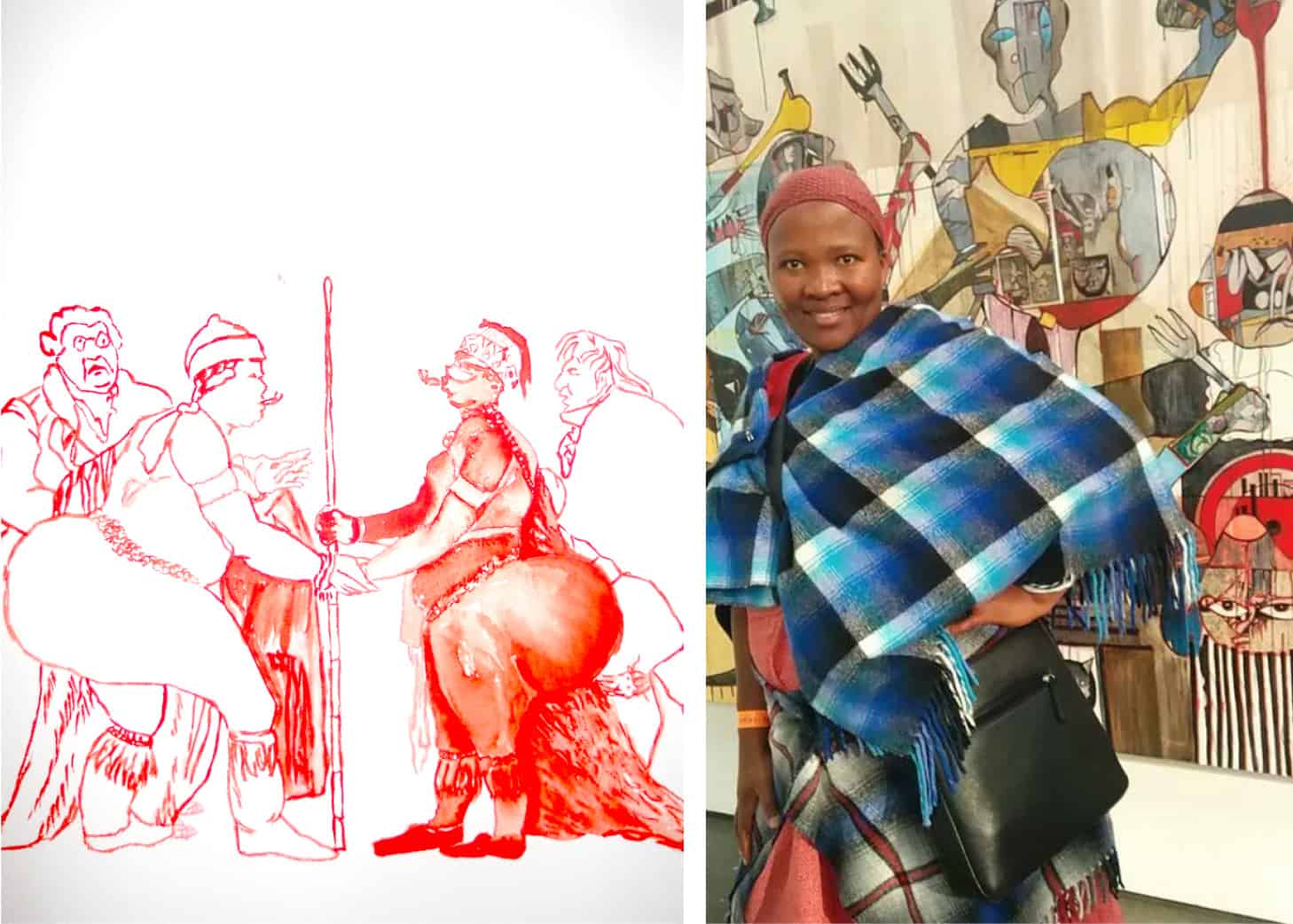
Yes, there is African art. It defines my practice working in Africa, particularly in South Africa. I do personally define myself as an African first. I am still trying to understand the global citizenry. Would it not be simple to define artists that work in Africa as African artists? Andy Warhol is an American artist, my hero. Senzeni Marasela is an African artist. I don’t complicate it.
Does the label “African Art” enable or limit artists from the continent?
African artists have far more opportunities for travelling and sharing than artists fifty years ago did. We have access to more information and university education for those of us that choose that route. I see many African artists, like Mary Sibande, Kemang Wa Lehulere, Wangechi Mutu, Baloji (who recently worn the rolex award), Philemon Hlungwani (one of my personal heroes) and Nelson Makamo, who are definitely enabled by the current environment.
Do you think the issues of labels and identity are still valid? Or is it old news?
That’s for individuals to answer. I remain an African artist based in South Africa. I do not disassociate myself from the rest of the continent.
Africa is a new economic frontier where young people are shaping Africa’s future. What do they want to see, hear and read that will inspire them to embrace African arts and culture?
We need more schools in the townships with fully-fledged visual art departments. There is only one in Soweto, the PJ Simelane Secondary School in Dobsonville, which offers visual arts until Grade 12. This school needs more support in order for their visual arts students to see the importance of arts education.
It can be argued that Africa’s time is now. How do we prepare to take full advantage of the opportunities that are constantly unfolding in front of us. More importantly how does the African contemporary art establishment position itself to emerge as a ‘global player’ whose voice can be heard and respected?
We need more galleries, especially ones that are artist-owned or artist-run. Artists need to understand that we should be fully involved in the business of the arts industry.
There is a perception amongst some on the continent that South African contemporary art is more ‘Western’ than ‘African’. How do we bridge the divide geographically and culturally, between the north and the south?
This is a general societal problem. We were colonised differently as South Africans. There are some people who don’t even know for sure that we are a part of the continent, but we are in Africa! More collaborative projects need to come up. Benin opened a museum of contemporary African art, but where is ours in South Africa?
Is a new trans national ‘African art dialogue’ needed to foreground the various conversations, challenges and successes from other African centres of culture and thinking?
I believe structures like the Arts Councils of the African Studies Association (ACASA), assembling In Ghana in 2017, are seeking to address these dialogues.
If Africa can leave behind its idea of Africa as a geography, or as a post colonial reaction, or as being defined by blackness, can it then be defined rather as a new dynamic energy?
Africa has always been a dynamic energy, it has just never had the opportunity to write its history and define itself. The vast majority of people who live in Africa are black. Must blackness be set aside? It first needs to define itself without the negations and burdens of English and French Colonialism. Then it can become a new entity.
There is a new generation of Africans whose minds are not shackled by a past of oppression or power dynamics. How do we engage and inspire them to embrace art and culture?
Post-Blackness, this is the middle class whose wealth helps them to transcend race issues. What other tangible devices do we have to help people like me transcend blackness? I personally remain a black African − fully aware of my history.
How can we avoid bad historical precedents and pigeonholing from framing our future discourse?
Open dialogues about current dilemmas.
What new stories of identity are revealed for this Africa through its art?
Stories of self-definition, the importance of it and the need to write ones story.
What is African art when it is no longer called African art?
The continent will have to disappear in order for African Art to be called something else. African artists are very much inspired by their background.
As Africa emerges, transforms and gains energy, what will African contemporary art represent?
The collective efforts of artists across the continent. We should know more about each other’s work as African Artists than we do about European and American art.
What are the deepest provocations that art should pose for Africa today? And how do you think these will influence Africa 15 years from now?
Issues surrounding the identity of minorities, artists that work outside of universities, artists who are self-taught in villages etc.
As a confident transnational Africa emerges, what do we see as the most progressive approach that ‘African art’ can take and what does this approach represent and what new qualities does it posses and pose?
We need more art education in early childhood development, across the continent. This will ensure the rise of more artists and art-appreciating audiences and patrons.
Who is the new African art hero?
Samuel Baloji and Philemon Hlungwani.
Is there anything else you would like to add that hasn’t been covered in these questions?
Commercial galleries must treat artists better; I hear such heart-breaking stories from artists, some are truly appalling.
Senzeni Marasela has taken part in numerous South African shows and was an artist-in-residence at Iziko SANG in Cape Town in 2000. Her work has been featured in prominent international exhibitions in New York, Sweden, and Berlin.



